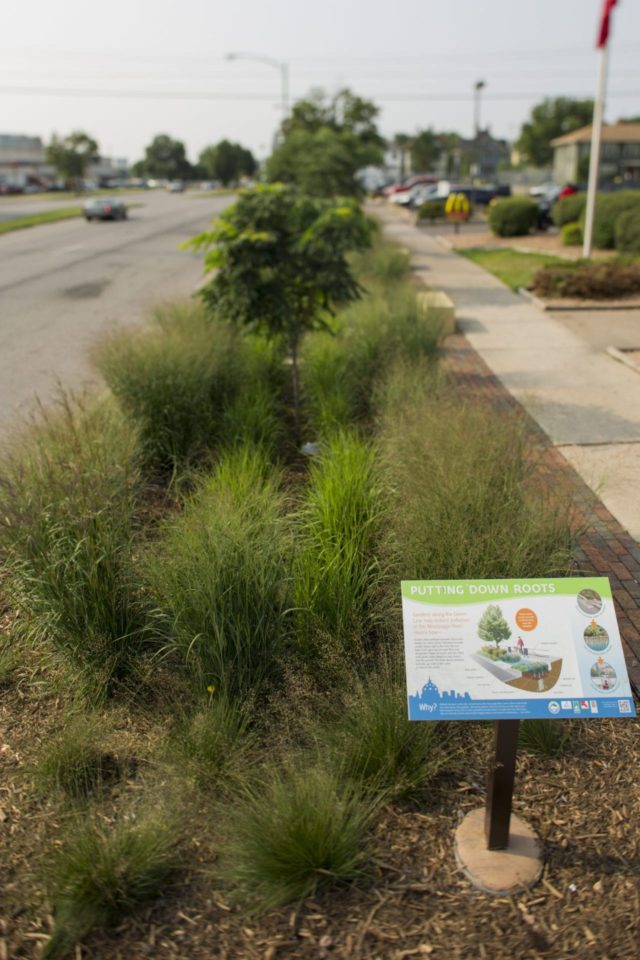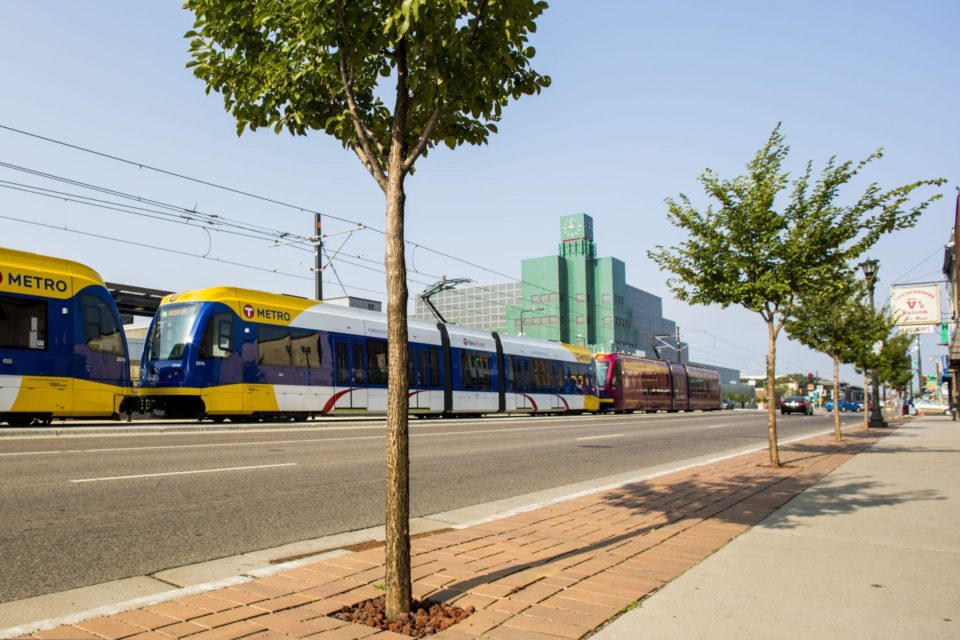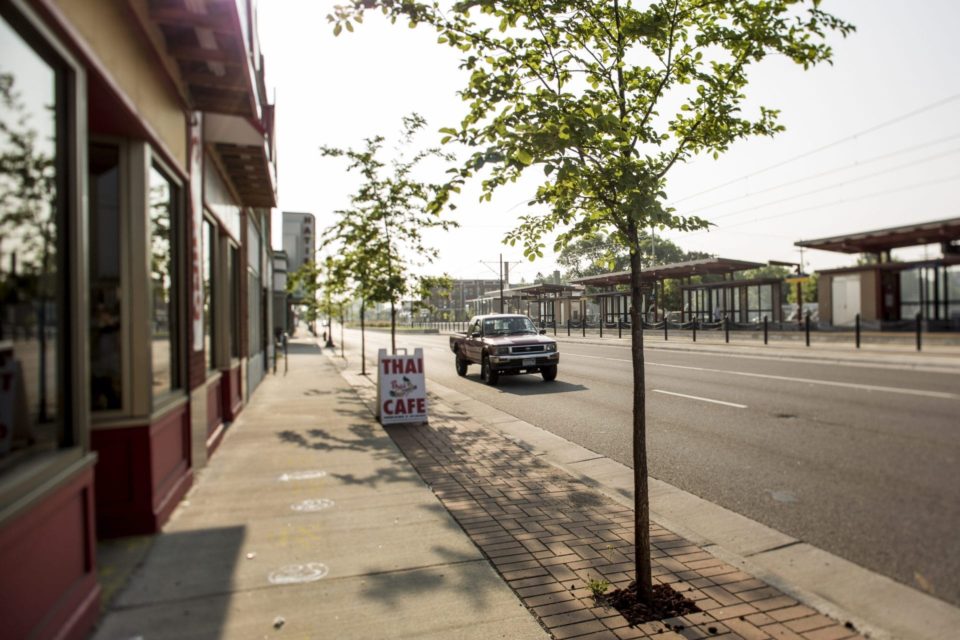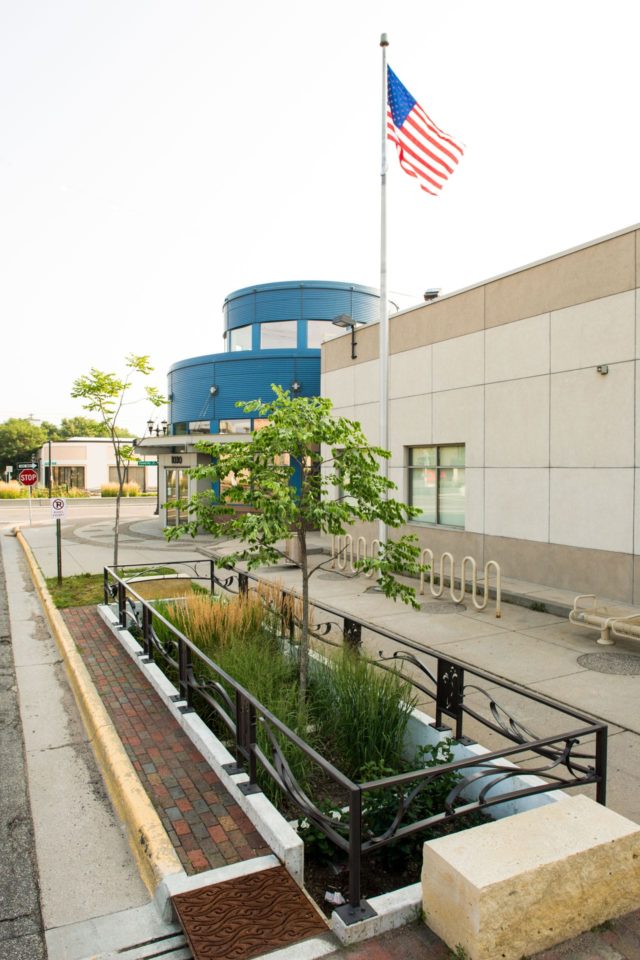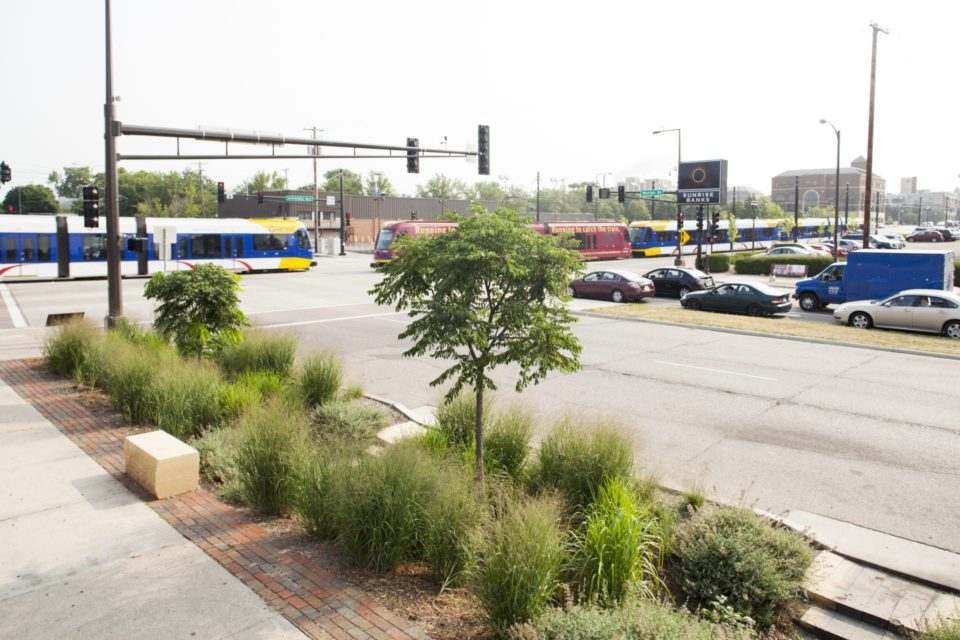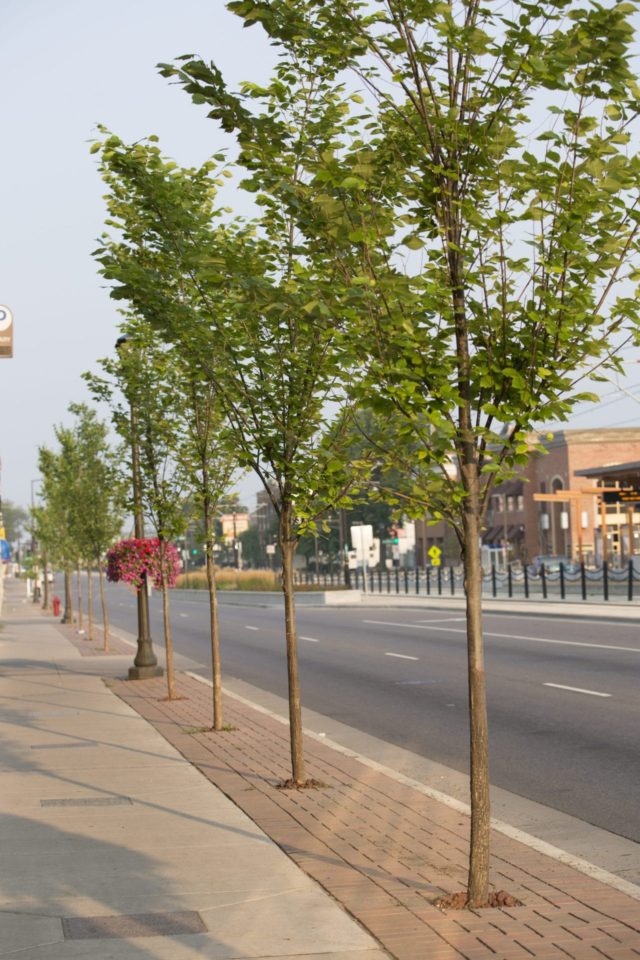A Saint Paul Conservation Journey
The light-rail transit (LRT) Green Line links Downtown Minneapolis with Downtown Saint Paul along the University Avenue corridor. This long-awaited Metro Transit LRT line was first proposed during the 1990s, with construction beginning in 2010.
Green Line construction was a perfect opportunity for CRWD to build green infrastructure practices along the route to help control flooding, manage runoff and improve water quality. With eleven Green Line green infrastructure projects along the route, CRWD sought to connect a variety of sustainable stormwater management features, with the goal of treating stormwater, educating the public and adding beauty to University Avenue. Project partners included the Metropolitan Council, City of Saint Paul and Ramsey County.


